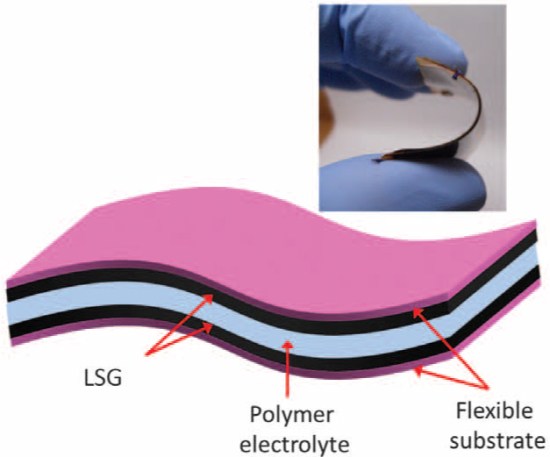Flexible Graphene Supercapacitors Can Be Made With a DVD Burner
If it wasn’t enough that graphene is photovoltaic and that it can be as strong as steel in sheets as thin as paper, it turns out that graphene has yet another useful application; graphene can be used to make thin, flexible supercapacitors that are 20 times more powerful than your average electrochemical variety. On top of that, the production process can be performed with a DVD burner. The applications, as you might imagine, are plentiful.
Graphene supercapacitors have been under development by a team at UCLA, led by Richard Kaner, and the production process appears to be about as simple as it sounds. To create the graphene, all you have to do is cover a blank DVD with a coating of graphite oxide. Then, when you put the coated disc on a LightScribe drive, the laser can convert the graphite oxide to graphene, though it’s unclear what that will burn onto the DVD in the process. From there, you just peel off the laser-scribed graphene (LSG) and use two slices as electrodes, which are slapped onto either side of a polymer electrolyte, sandwich style. And there you have it, a supercapacitor that blows the existing variety away.
Exactly how much better is this “super” capacitor? Enough to justify its name. LSG capacitors can discharge energy at a rate 20 times higher than the traditional, activated carbon kind and at a rate 3 orders of magnitude higher than that of a lithium-ion battery, which you’ll find in the majority of your portable devices. When it comes to energy, as opposed to rate of discharge (power), LSG capacitors don’t exactly blow standard batteries away, but they’re slightly better than the best ones out there. LSG capacitors also have the bonus of longevity; they suffer a negligible rate of decay over a course of 10,000 cycles, unlike lithium-ion batteries. Suffice it to say, they’re a pretty tantalizing replacement for the norm. Oh, also don’t forget they’re flexible.
This all has to do with LSG’s impressive surface area. Because it’s peppered with nanoscale holes, LSG can have over 1,500 meters of surface area per gram. That’s about a third of an acre. Considering that a capacitor’s power is very reliant on the amount of surface area its electrodes have, you can probably see why LSG is a dream material. Considering the relative ease of production along side the impressive statistics, LSG supercapacitors seem like a shoe-in as a replacement for batteries, in mobile devices at least. Don’t expect this to be the last thing you hear about graphene either. The stuff appears to have nearly limitless potential.
(via ExtremeTech)
- Graphene generates electricity when struck by light
- And is crazy strong
- It won its creators the Nobel Prize, and rightly so
Have a tip we should know? [email protected]
